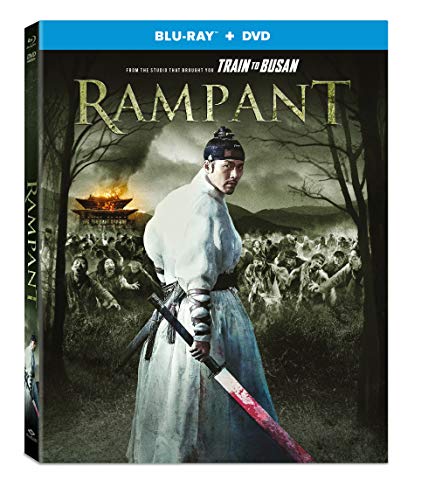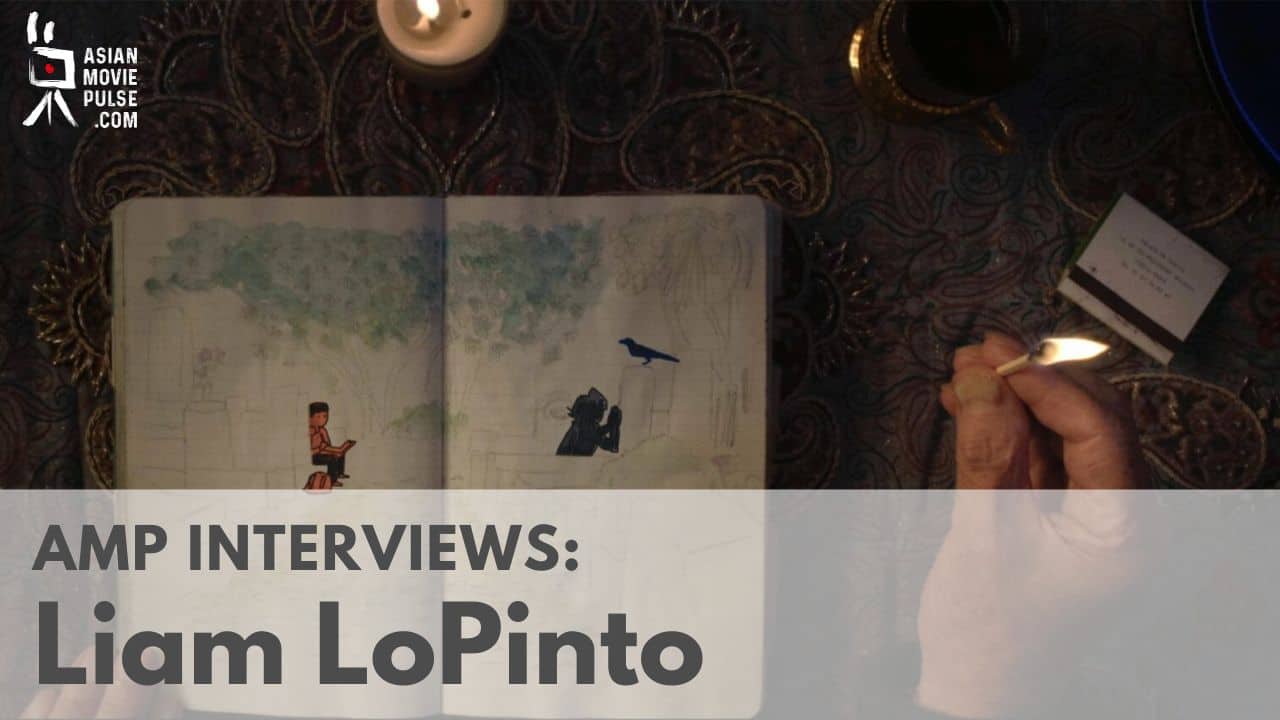The truth is, that despite common belief, horror is not dominant at all as a genre in Asia; in fact the only time it ever was, was during the J-horror explosion. However, a number of very interesting productions in the realm of the extreme do continue to be produced, while this year, “One Cut of the Dead”, a zombie movie, became one of the most impactful productions of the year, for various reasons, with the same applying to “Dukun”, a Malaysian film which was completed in 2007, but managed to be screened only this year, due to its controversial nature.
Nevertheless, here are the best horror/splatter/thriller movies of 2018, in random order. By thriller, we mean the part that leans towards the horror, not films like “I Saw the Devil”, for example. “Liverleaf” does not fall exactly under this category, but the gore involved allowed us to include it in the list
(By clicking on the titles, you can read the full reviews)
7. Gonjiam: Haunted Asylum (Jeong Beom-sik, 2018, S. Korea)
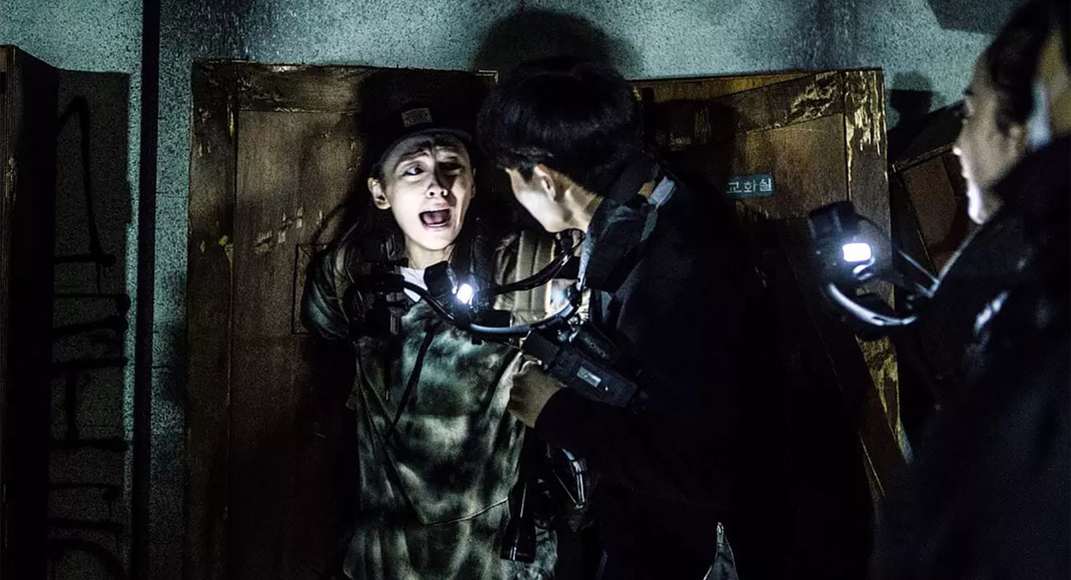
With almost no real flaws to be had and plenty of strong, noteworthy elements present, “Gonjiam: Haunted Asylum” is a truly effective and genuinely frightening genre effort that holds up incredibly well. Seek this out if you're a fan of Asian horror, a found-footage advocate or curious about Asian attempts at the genre while there isn't much to dislike here beyond those that don't appreciate subtitled foreign films in general (Don Anelli)
Buy This Title
3. One Cut of the Dead (Shinichiro Ueda, Japan)

The film mocks every aspect of the entertainment industry, and this seems to be Ueda's foremost purpose. In that fashion, “One Cut of the Dead” parodies the occasional strictness of the directors (the harsh behaviour usually associated with auteurs actually), having Higurashi yell “Action” at the most inappropriate times, not to mention the fact that he has used actual zombies in order to make his film more realistic. The caprices of the movie stars also get their share of mocking, as do the ridiculous demands of the industry producers, along with the fact that the majority of people in the industry consider TV shows of low quality. Furthermore, the struggles of low budget productions are also presented and mocked, while one has to laugh with the concept of the drunken director of photography, who actually ends up playing the zombie. Lastly, the role of the scream queens, the self-defense lessons for women, and “The Method” also get their share. (Panos Kotzathanasis)
Buy This Title
5. May the Devil Take You (Timo Tjahjanto, 2018, Indonesia)

While ‘May the Devil Take You' may tend to wander a tad too much in the later half, the rest of the film is a stellar, top-notch over-the-top ride with continuous confrontations, plenty of strong horror sequences and a frenetic atmosphere. Readily dive into this one if you're at the least curious, a fan of the director's other work or enjoy this kind of Asian horror, while those that don't enjoy it should heed caution. (Don Anelli)
Buy This Title

6. Sabrina (Rocky Soraya, Indonesia)

One of the strongest aspects here is the supernatural elements present. These are quite prominent in creating a wholly chilling atmosphere. The opening sequence of them rescuing the possessed woman in the house offers a nice start here, while the eerie sequence of the daughter searching for her mother offers up some nice imagery. Once this moves on to trying to drive Maira crazy, the movie provides some outright chilling sequences that work rather well. (Don Anelli)
7. The Spell (Amit Dubey, Cambodia)

“The Spell” is a moody, tense horror film blended with family drama. Similar to his first film, Dubey explores the themes of family, the supernatural and the distortion of the mind. Equipped with an extensive skill in setting the tone of a scene, framing it and creating suspense, “The Spell” is a worthwhile entry into the genre with many scary scenes and imagery. (Rouven Linnarz)
Watch This Title
8. The Vanished (Lee Chang-hee, S. Korea)

This plays out mainly in dimly lit interior spaces, with most of the film taking place in the National Institute of Scientific Investigation, against a stormy background of intemperate weather. This contraction of the space of action heightens the emotional claustrophobia of the characters which is mirrored through the architecture of space and mobile framing. The opening sequence connects space, character and plot, as the camera takes us down dark corridors, tracks up walls, frequently switches from close to long shots as well as utilising aerial shots to disorientate and disturb perspective focusing momentarily on key plot elements: an empty cold mortuary locker, a female body slumped in the corridor caught by the light of the Guard's flashlight before disappearing and the fake tears of the bereaved husband (Colette Balmain)
9. Liverleaf (Eisuke Naito, Japan)

Director Eisuke Naito channels “Lady Snowblood” here and most of the action and bloodshed are in the second act which is nicely marked by the arrival of a snowstorm in the countryside. I really enjoyed the conflicts we see against the snowy backdrops. One scene in particular that stood out was when Nozaki bites her lip in a fit of rage and blood lines her lips. She and her love interest Mitsuru Aiba (Hiroya Shimizu) kiss and there is a pseudo vampiric exchange between them that I found very stylish. (Matt Ward)
10. Dukun (Dain Said, Malaysia)

One of the more worthwhile elements to ‘Dukun' is when the film focuses on horror. Starting off with the discovery of the dismembered body found in the ritualistic condition and manners offers a strong entry point that is greatly enhanced by the rather chilling sequences in the prison. Forcing the inmates in the cell with her to act in mannerisms strongly suggesting possession, from contortion and speaking in tongues to licking the cell-wall and attacking those sent in to calm them down. These all make for a great setup into the later half where the film provides plenty of dark rituals shown in great detail. Featuring animal sacrifice, blood rituals and dismemberment alongside tribal dancing customs and various other practices, these scenes carry quite a fine sense of darkness playing off the ritualistic actions being presented, as well as offering up the quantity being showcased. The most chilling scenes that take place here are the further outbursts the possessed undergoes in her cell, shown to be visibly scratching her body and writing messages in blood which look brutal and quite graphic overall. (Don Anelli)
30. Dearest Sister (Mattie Do, 2018, Laos)

There are some recurrences between the director's first and second features. With the actors first: Amphaiphun Phommapanya is still playing the main character, or Douangmany Soliphanh can again be seen as a father-figure. Secondly, in terms of image: despite having supernatural elements to the plot, the frames and lighting add a touch of fiction as a representation of reality. Finally, in terms of themes (although the movies are two totally different ones): nuanced and interesting female characters, family binds, religion and beliefs, connection to the spiritual world, solitude. (Oriana Virone)
29. Monstrum (Huh Jong-ho, 2018, South Korea)

These, however, are the only negative aspects, since the execution of the film is truly magnificent. The action scenes (both hand-to-hand and those against the monster) are impressive, with the combination of choreography, SFX, cinematography and sound resulting in an astonishing audiovisual experience. The fact that these scenes appear in abundance in the film is the greatest asset of the production, and in conjunction with the relatively small duration (105 minutes), retain the interest from beginning to end. (Panos Kotzathanasis)
Buy This Title
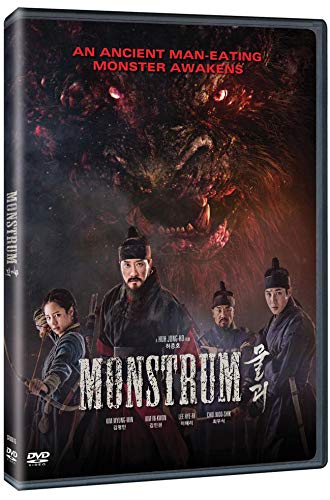
Premika (Siwakorn Charupongsa, 2018, Thailand)
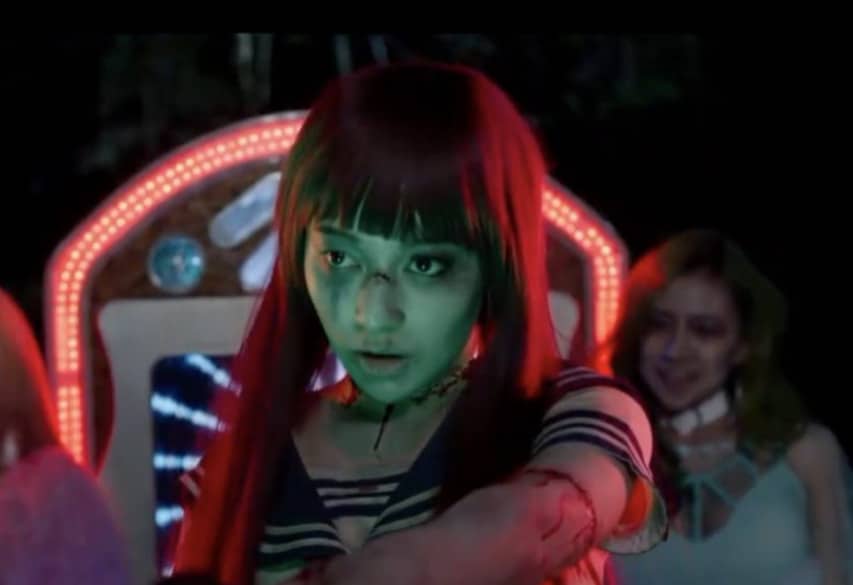
Filled with gaudy, bright colors, blaring techno music and tons of cheesy decorations, the idea of a ghost utilizing a possessed karaoke machine fills the goofiness quotient of the storyline which really helps set that atmosphere rather quickly. While “Premika” does have a few minor issues apparent throughout here, none of them are truly detrimental enough to fully lower this fro
23. Rampant (Kim Sung-hoon, 2018, South Korea)

There was quite a lot to like with ‘Rampant.' Among its finest qualities is the manner in which the zombie outbreak is being loosened upon the populace, infecting the outer regions of their control and slowly working towards the capital. With a special rename into Demons which is appropriate enough for the time period of the film, the action on display takes on nearly a wuxia form of interplay, courtesy of Action Choreographer Kim Tae-kang. As this includes some fascinating jumping and wirework stunts with the infected shown to be quite athletic in addition to more traditional shambling hordes style zombies, there's plenty to like with the rampaging hordes loosened upon the city, creating all sorts of havoc. (Don Anelli)
Buy This Title
19. Tumbbad (Rahi Anil Barve and Adesh Prasad, 2018, India)

On the technical level, “Tumbbad” is nearly perfect, especially given the gap between modest budget and huge period-piece ambition of the filmmakers. The original score written by the video-game composer Jesper Kyd serves the film well, as is the rhythmic editing by Sanyukta Kaza. And speaking about the cinematography, handled by Pankaj Kumar must be done in superlatives since “Tumbbad” is one of the best-looking genre films we have seen in years. (Marko Stojiljković)
Buy This Title
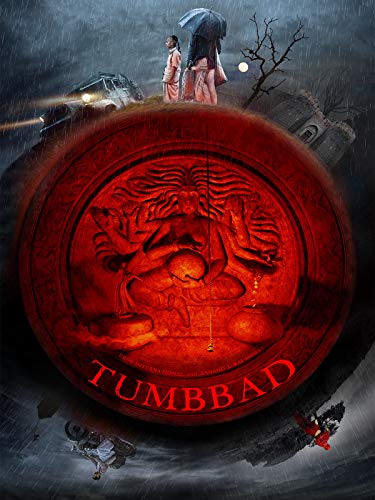
17. Kodoku Meatball Machine (Yoshihiro Nishimura, 2018, Japan)
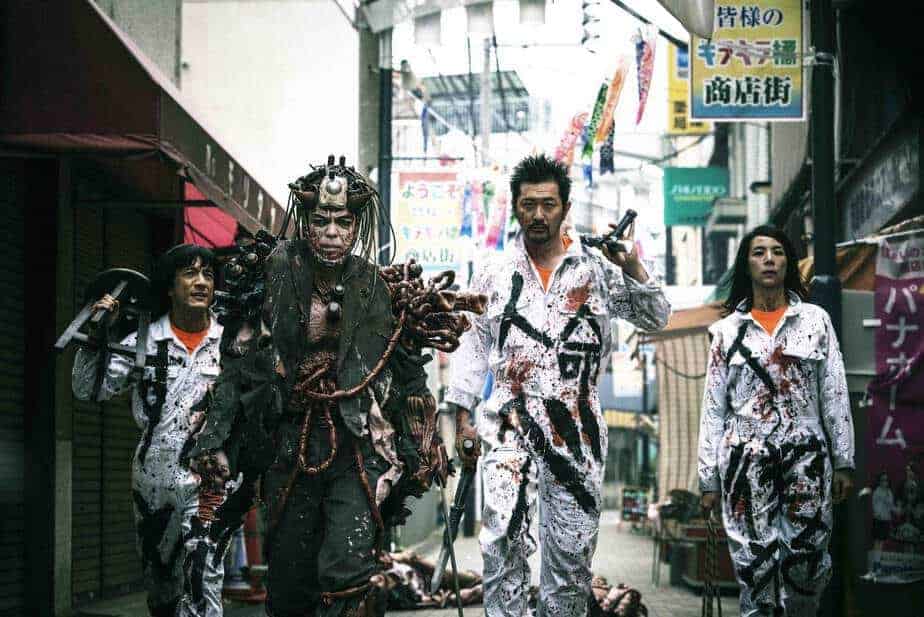
After the first 20-minutes, all of the radically different themes come together through violence, gore and extreme action, with the film taking the form everyone is expecting from a Nishimura production. Starting with the metamorphosis, which eventually has almost everyone that wronged Yuji transforming into a Necroborg using weapons according to their previous occupation, and continuing with the killing of innocents (including a kid) and much fighting among the creatures and Yuji and his gang, the film becomes a true bloodfest, where, apart from blood, Nishimura's extreme imagination and slapstick humor seem to thrive. (Panos Kotzathanasis)
Buy This Title
16. Violence Voyager (Ujicha, 2018, Japan)
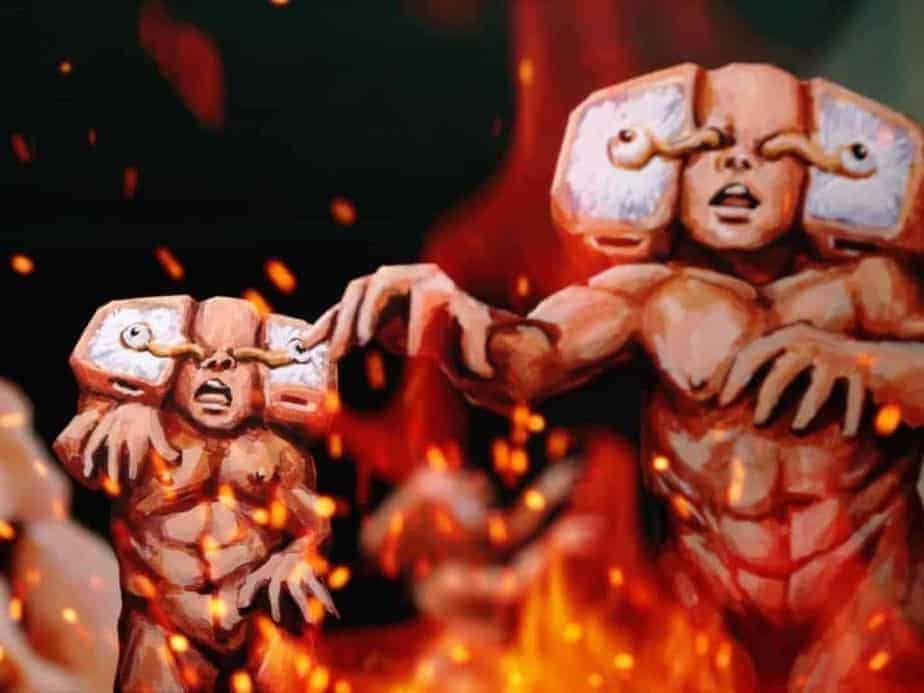
Victims are shown to be impaled with metal poles, harm their arms ripped off, disemboweled or just ripped to pieces. Non-lethal injuries, from being sprayed with accident or shown with melted body parts, run rampant in the film much like the actual body modification processes shown. On top of it all, the gratuitous and frequent child nudity for both male and female children, many of whom are barely double-digits in age if that, creates such a disturbing and uncomfortable feeling that permeates itself in the latter half when the action kicks up. Coupled with the obscure animation style, there's not much else to the effort. (Don Anelli)






